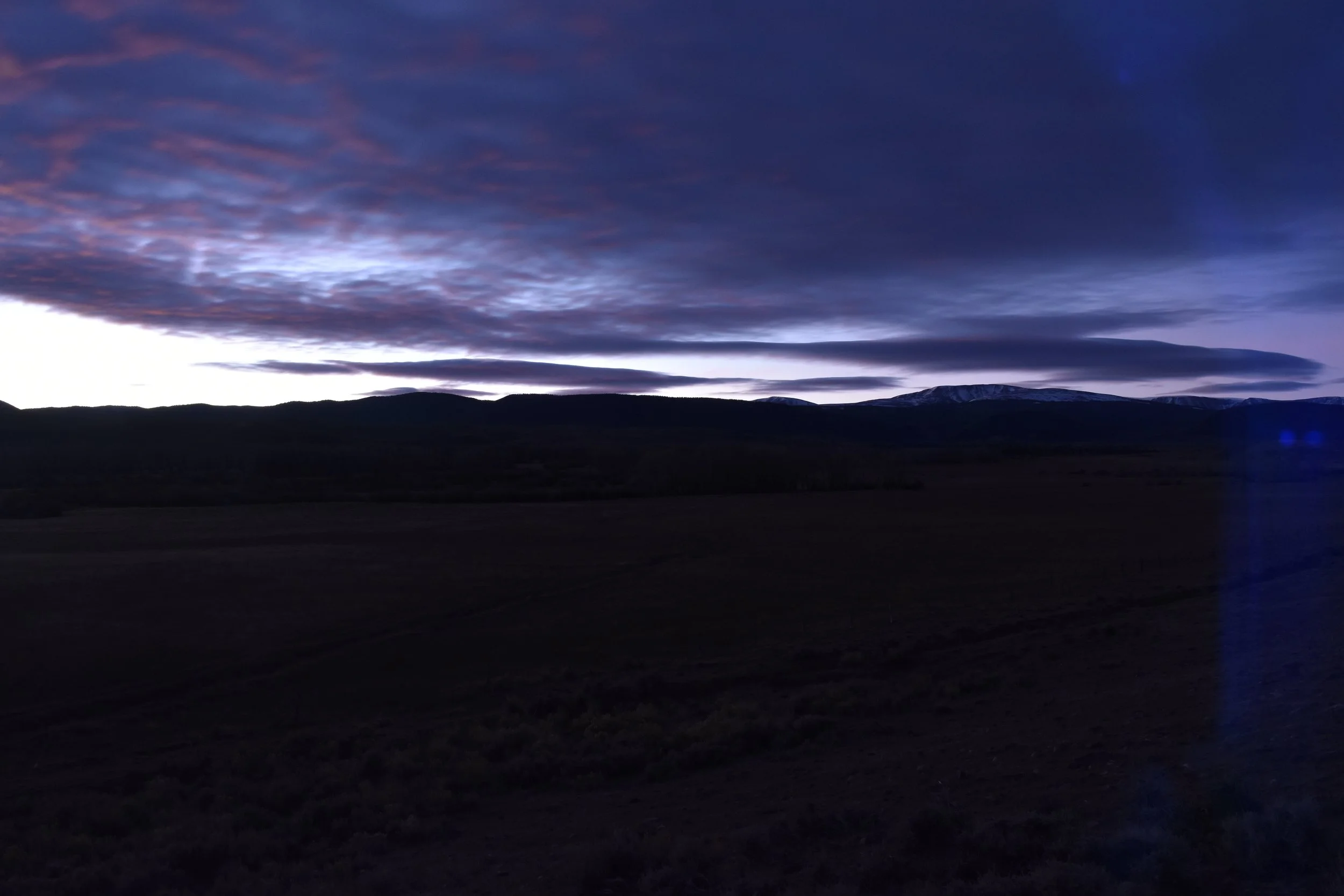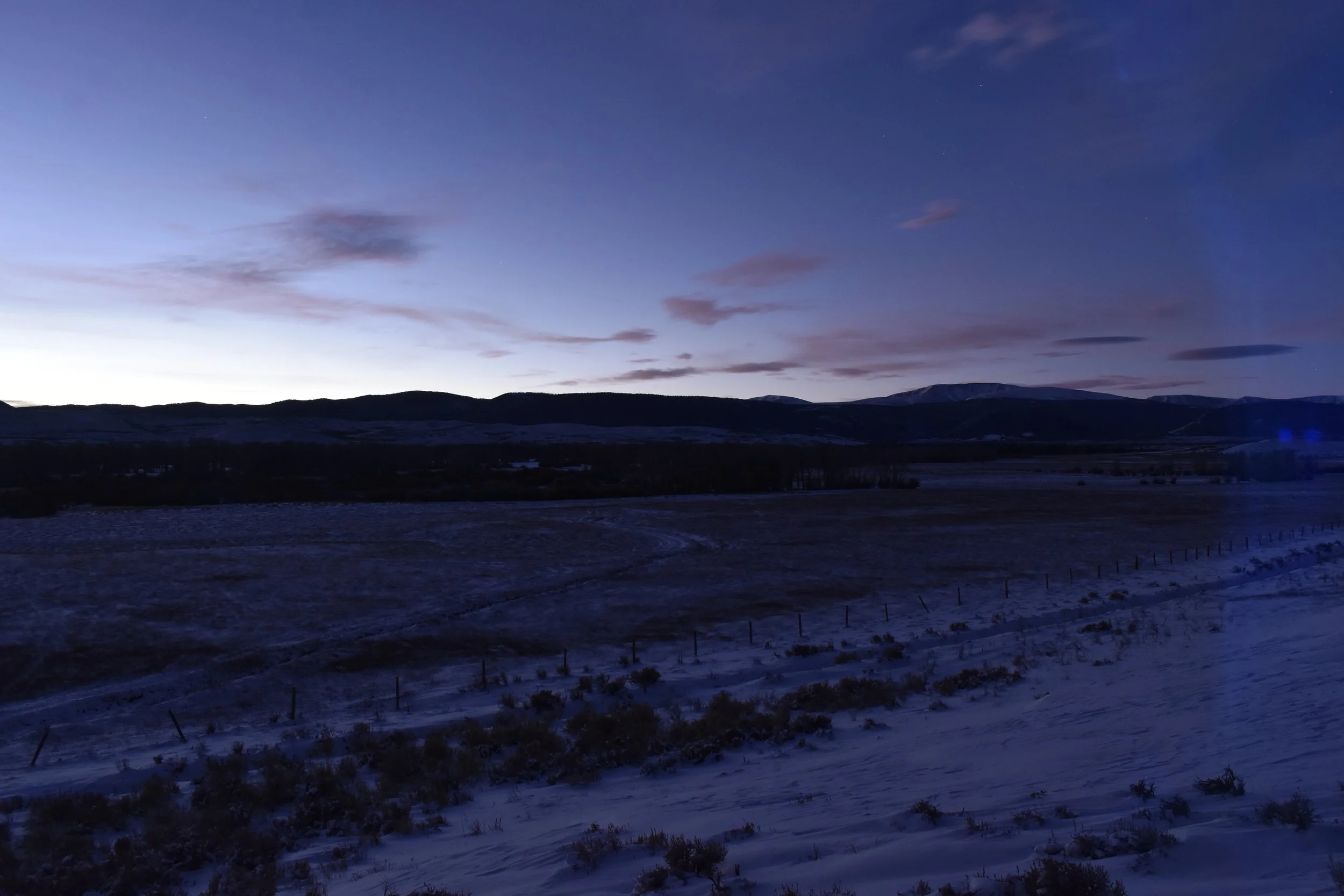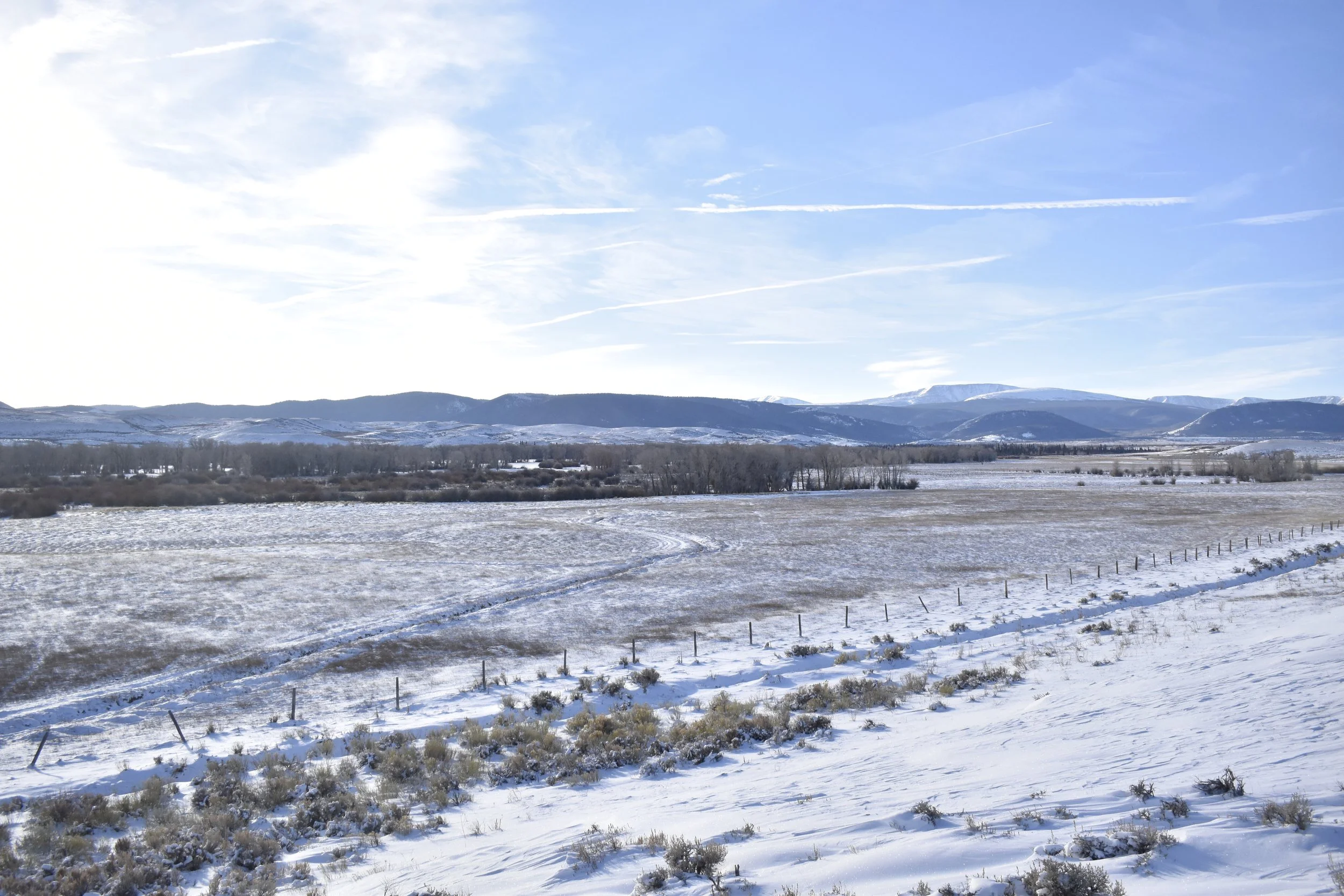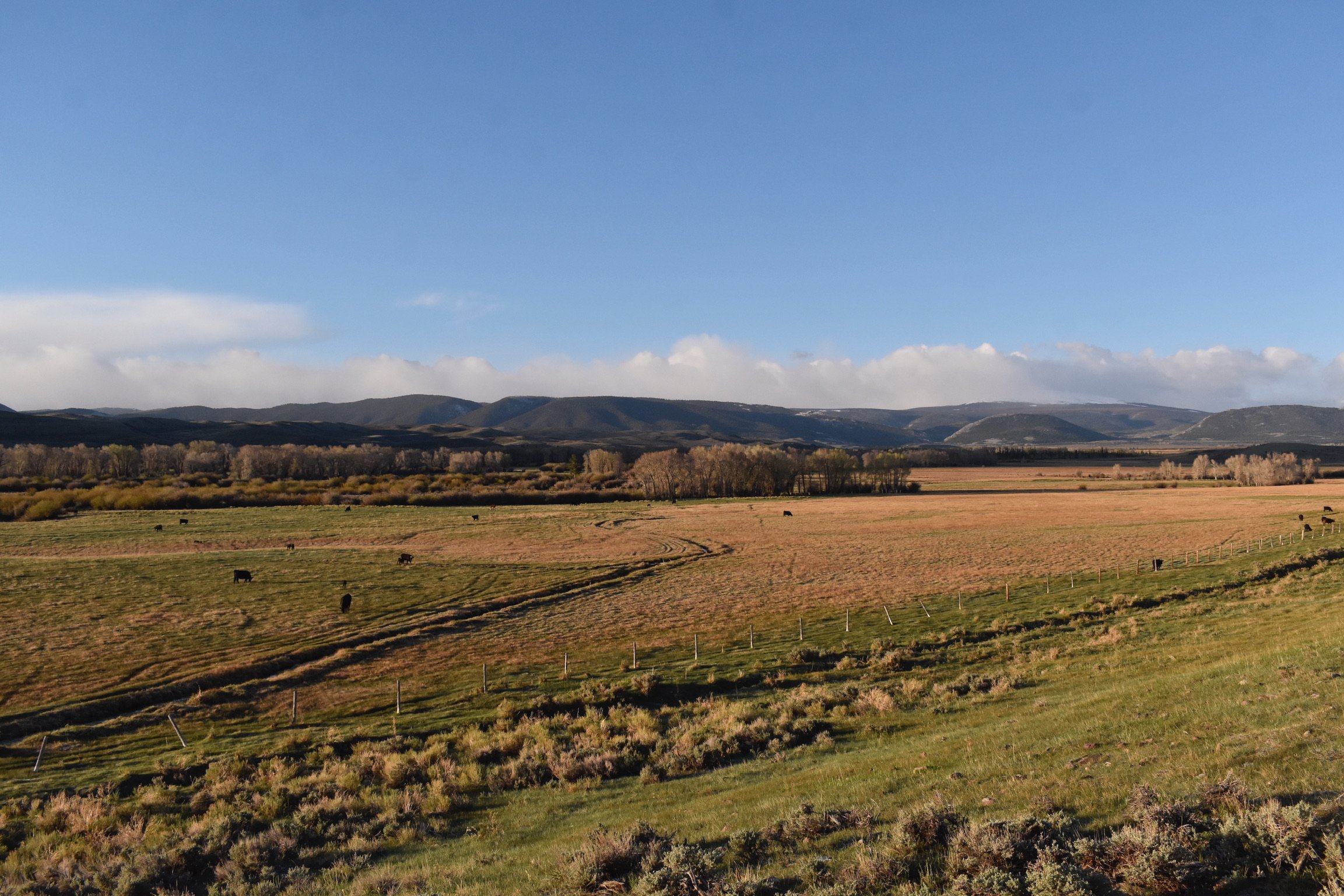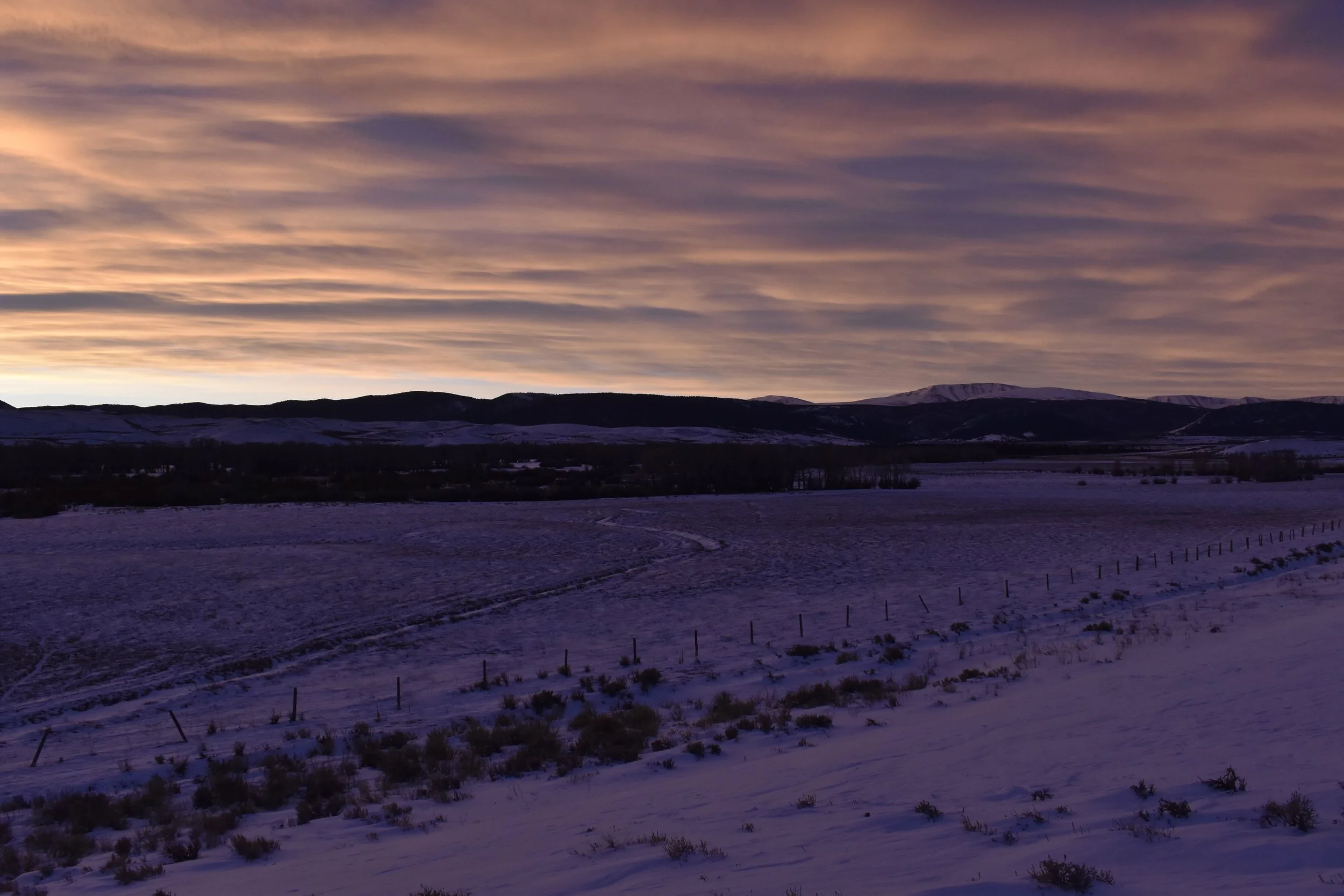The Hill Pasture
EXPLORING the Landscape & IRRIGATION
Perched in a unique vantage point, Camera 3 offers a panoramic view southeast towards the majestic Wasatch National Forest and the Uinta Mountains, seamlessly capturing the contrasting beauty of Hill Pasture and Fallon Field. The Hill pasture is largely sage brush step and old CRP planting. The fence in the foreground separates the Fallon Field and the Hill Pasture. At one point, the Fallon Field was cultivated for hay, making it a field rather than a pasture. Today, the Fallon Field is wet most of the year and unsuitable for hay production.
Mountains, Meadows & Wildlife
In the distance, the Uinta Mountains and Burro Peaks stand as the backbone of this landscape, marking the headwaters of our watershed. These east-west trending mountains form a unique subrange of the Rockies, integral to the ranch's ecosystem. Historically used for summer grazing, this region also serves as a wildlife refuge, sheltering mule deer and elk, especially visible through the lens of game cameras set up in partnership with the Haub School of Environment and Natural Resources.
Timelapse Insights & environmental observations
Four years of timelapse photography reveal subtle yet significant changes across the landscape. The Fallon Field, classified as Emergent Herbaceous Wetlands, showcases a unique ecological adaptation with water-saturated vegetation. Comparative observations between the Fallon Field and Hill Pasture highlight distinct seasonal variations, offering a visual narrative of the land's response to environmental changes.
Future Considerations & Highlights
As we ponder the optimal use of Fallon Field and the potential of transforming it into a restored wetland refuge, we invite viewers to explore supplementary data, including grazing plans, wildlife counts, and soil analysis. The culmination of our story is captured in stunning timelapse visuals, featuring breathtaking sunrises, sunsets, and a year-round montage, encapsulating the beauty and dynamism of this unique landscape.
Twelve Months in One Picture
January in the first frame and December in the last. Seeing the change in seasons like this has been eye-opening. We see the green long after it starts and think it stays green longer than it does. After a winter like 22/23, seeing green is a great relief!






